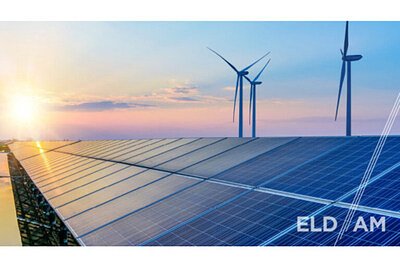
Beyond Ownership: Daylight Energy’s Subscription Solar Aims to Reshape Home Power
A new $75M investment is fueling a subscription-based solar model that bypasses upfront costs and leverages blockchain for transparent energy payouts. Could this unlock wider access to clean energy?
Beyond Ownership: Daylight Energy’s Subscription Solar Aims to Reshape Home Power
By Michelle Bell – Connected Futures: Infrastructure & the Next Wave of Mobility
Singapore-based ELD Asset Management has backed Daylight Energy’s recently disclosed $75 million financing round, signaling a growing investor appetite for innovative approaches to residential solar. Daylight’s model, which bypasses traditional upfront costs in favor of a monthly subscription for rooftop solar and battery backup, aims to fundamentally alter how homeowners access clean energy. The funding, led by Framework Ventures and Turtle Hill Capital, positions the company to roll out its services initially in Illinois and Massachusetts.
While electric vehicles often grab headlines in the clean energy transition, the infrastructure supporting distributed power generation remains largely under the radar. Daylight Energy is attempting to address a critical friction point in residential solar adoption – the high upfront costs that remain a barrier for many homeowners. By offering a subscription service, the company aims to democratize access to solar, framing it not as a capital expenditure, but as a predictable monthly service.
“The biggest hurdle for many families isn’t necessarily a lack of interest in solar, but the sheer financial commitment required,” explains a source familiar with Daylight’s strategy. “This subscription model removes that barrier, allowing homeowners to benefit from clean energy without a significant upfront investment.”
Decentralizing the Grid, One Home at a Time
Beyond affordability, Daylight’s approach also addresses a growing need for grid resilience. By aggregating home batteries into a virtual power plant, the company aims to create a more distributed and responsive energy network. This virtual power plant can then provide grid services, such as frequency regulation and peak demand response, earning revenue that is passed on to homeowners.
“We’re essentially turning homes into distributed power plants,” says a Daylight Energy insider. “This not only benefits homeowners through reduced electricity bills but also strengthens the overall grid by providing a more reliable and flexible energy source.”
This focus on grid services is a key differentiator. While traditional solar installations primarily focus on self-consumption, Daylight’s model actively contributes to grid stability and can earn revenue from participation in wholesale energy markets. This dual benefit – reduced bills and earned income – makes the proposition particularly attractive.
Blockchain as the Engine for Transparency
Underpinning this innovative model is DayFi, Daylight’s proprietary blockchain protocol. DayFi is designed to map metered electricity revenues from the distributed portfolio to on-chain claims, ensuring transparent and automated payouts. This eliminates the need for complex billing and reconciliation processes, reducing administrative costs and improving trust.
“The use of blockchain isn’t about chasing hype,” clarifies an industry analyst familiar with the technology. “It’s about creating a verifiable and auditable system for tracking energy generation and revenue distribution. This transparency is crucial for building trust with homeowners and attracting institutional investors.”
The potential for automated payments and reduced administrative overhead is significant. By leveraging blockchain technology, Daylight can streamline the entire revenue distribution process, reducing costs and improving efficiency.
Navigating the Regulatory Landscape
Daylight’s success hinges on navigating a complex regulatory landscape. State policies regarding net metering, virtual power plants, and blockchain technology will play a crucial role in determining the viability of its model. Illinois and Massachusetts were strategically chosen as initial launch states due to their supportive policies and robust interconnection rules.
“These states have been proactive in promoting distributed energy resources and creating a favorable environment for innovation,” notes a regulatory expert. “That said, challenges remain, particularly around ensuring fair compensation for grid services provided by virtual power plants.”
The company is actively working with regulators to ensure compliance and address any potential roadblocks. A collaborative approach will be essential for unlocking the full potential of its model.
ELD Asset Management’s Perspective
ELD Asset Management’s investment underscores a growing interest in innovative energy solutions. The firm’s focus on specialty project facilities and venture equity aligns perfectly with Daylight’s ambitious goals. The investment represents a bet on the future of distributed energy and the potential for blockchain to transform the energy sector.
“We’re looking for companies that are not only solving important problems but also building sustainable business models,” explains a source within ELD Asset Management. “Daylight’s approach is compelling because it addresses a critical barrier to solar adoption and has the potential to create a more resilient and sustainable energy system.”
Competition and Future Growth
The residential solar market is becoming increasingly competitive, with established players like SunPower, Tesla Energy, and Sunrun vying for market share. Daylight’s subscription model differentiates it from traditional players, but it will need to effectively communicate its value proposition to consumers and compete on price and service.
“Differentiation is key in this market,” says an industry analyst. “Daylight’s subscription model is unique, but it will need to build a strong brand and provide exceptional customer service to succeed.”
Looking ahead, Daylight plans to expand its services to new states and explore opportunities to integrate its virtual power plant with other grid services, such as demand response and energy storage. The company also plans to leverage data analytics to optimize its virtual power plant and provide personalized energy solutions to homeowners.
The potential for growth is significant. As the demand for clean energy continues to rise, Daylight’s innovative approach could play a key role in accelerating the transition to a more sustainable energy future. By removing barriers to solar adoption and empowering homeowners to participate in the clean energy revolution, Daylight Energy is paving the way for a brighter, more sustainable future.
